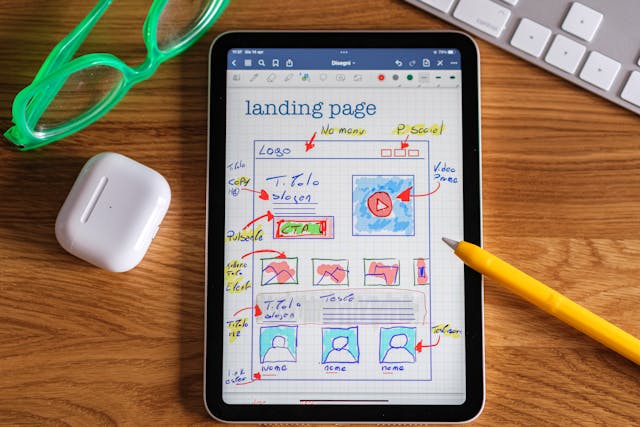
How AI and Machine Learning Are Shaping the Future of Software Development
Artificial Intelligence (AI) and Machine Learning (ML) are rapidly transforming industries worldwide, and software development is no exception. As AI and ML technologies advance, they are creating new possibilities for software development, from automating routine tasks to enabling smarter, more innovative solutions. Software development, once a labor-intensive process requiring meticulous coding and manual testing, is now evolving with the help of AI and ML, allowing developers to work faster, more efficiently, and with higher levels of precision.
The Role of AI and ML in Software Development
AI and ML are not just buzzwords; they represent transformative technologies that enable software systems to learn from data and make intelligent decisions. In software development, AI is used to enhance traditional programming by automating tasks such as code generation, testing, debugging, and even software design. Machine Learning, a subset of AI, allows systems to learn from experience without being explicitly programmed. By analyzing patterns and behaviors in data, ML models can optimize workflows, predict potential issues, and deliver more accurate results.
Key Areas Where AI and ML Are Impacting Software Development
Automated Code Generation AI-powered tools are streamlining the code-writing process. By analyzing vast code libraries and learning from patterns, these tools can assist developers by generating boilerplate code or even suggesting entire code snippets based on context. This reduces the time spent on repetitive coding tasks, allowing developers to focus on more complex and creative aspects of software development. Tools like GitHub Copilot, powered by OpenAI’s Codex, are already transforming how developers write code by providing intelligent code completion, reducing coding errors, and accelerating development.
Enhanced Testing and Debugging Testing is a crucial yet time-consuming part of software development. AI and ML are revolutionizing this space by automating the process of identifying bugs, running test cases, and predicting areas of potential failure. AI-driven testing tools can generate more comprehensive test scenarios, predict outcomes, and even prioritize which tests to run based on past results. ML algorithms learn from previous testing data to predict defects, helping developers identify and resolve issues early in the development cycle. This leads to improved software quality and faster release cycles.
Predictive Analytics for Project Management AI is transforming project management within software development. By analyzing historical data from past projects, AI can predict future project outcomes, timelines, and resource requirements. Machine learning models can detect patterns in development workflows, helping managers anticipate bottlenecks, resource shortages, or delays. This proactive approach to project management enables better decision-making and ensures that development teams can deliver projects on time and within budget.
Smarter DevOps with AI The integration of AI into DevOps processes is enhancing the speed and reliability of software deployment. AI can optimize Continuous Integration/Continuous Deployment (CI/CD) pipelines by automating build, testing, and deployment processes. For example, AI can automatically trigger deployment based on predefined conditions, monitor performance metrics, and even roll back changes in case of errors. AI-driven analytics tools also help monitor applications post-deployment, allowing for real-time performance optimization and quicker identification of issues.
AI-Assisted Decision-Making in Software Design AI is becoming increasingly instrumental in the software design phase. By analyzing user behavior and past software projects, AI tools can suggest design patterns, architectures, and frameworks that are best suited for a particular project. This data-driven approach leads to more efficient designs that are likely to perform better in real-world scenarios. Moreover, AI-based design tools can help developers visualize potential bottlenecks or scalability issues, enabling more robust and scalable software solutions from the outset.
Natural Language Processing (NLP) for Better Communication NLP, a branch of AI, is improving how developers interact with code and documentation. With AI-powered NLP tools, developers can describe what they want the software to do in natural language, and the AI translates it into code. This approach significantly reduces the barrier for non-programmers to contribute to software projects and enables developers to work faster by allowing them to focus on logic rather than syntax. Additionally, NLP can be used to improve code documentation, making it easier for teams to maintain and understand complex systems.
AI-Powered Security Solutions Cybersecurity is a growing concern for software developers, and AI is helping to address this challenge. AI and ML algorithms can detect unusual patterns of behavior in software systems, alerting developers to potential security breaches before they escalate. These technologies can also help identify vulnerabilities in code, making it easier to patch security issues early in the development process. AI-driven security systems continuously learn and adapt to new threats, ensuring that software remains protected in an ever-evolving digital landscape.
Real-World Applications of AI and ML in Software Development
Microsoft's Visual Studio IntelliCode: This AI-powered tool provides smart code suggestions based on patterns found in the developer’s code and across open-source projects. By using ML to analyze millions of lines of code, it helps developers write more accurate and efficient code faster.
Google's TensorFlow: TensorFlow, an open-source AI platform, is being used by developers to build intelligent applications. From natural language processing tools to computer vision models, TensorFlow allows developers to incorporate AI directly into their software projects, making their applications smarter and more responsive.
Facebook's Prophet: Facebook uses Prophet, an open-source forecasting tool, to make predictions about project timelines and outcomes. By analyzing historical data, Prophet helps developers and project managers anticipate project delays, optimize resource allocation, and adjust development processes in real-time.
The Future of Software Development with AI and ML
AI and ML will continue to reshape software development in the coming years. As these technologies become more sophisticated, they will enable higher levels of automation, leading to more efficient development processes. Developers will spend less time on routine tasks and more time on innovation and solving complex problems. Moreover, as AI becomes integrated with the Internet of Things (IoT), edge computing, and other advanced technologies, software will become smarter, more adaptive, and more capable of meeting users' evolving needs.
Conclusion
AI and Machine Learning are not just enhancing software development—they are fundamentally changing how we think about building, testing, and deploying software. From automating tedious tasks to enabling predictive analytics, AI and ML are empowering developers to create software faster, with fewer errors and more innovative features. As these technologies continue to evolve, they will become an indispensable part of every developer’s toolkit, shaping the future of software development and driving the next generation of digital innovation.
Companies that embrace AI and ML in their development processes will have a competitive advantage in delivering smarter, faster, and more scalable software solutions. The future of software development is here, and AI is leading the way.






(0) Comment